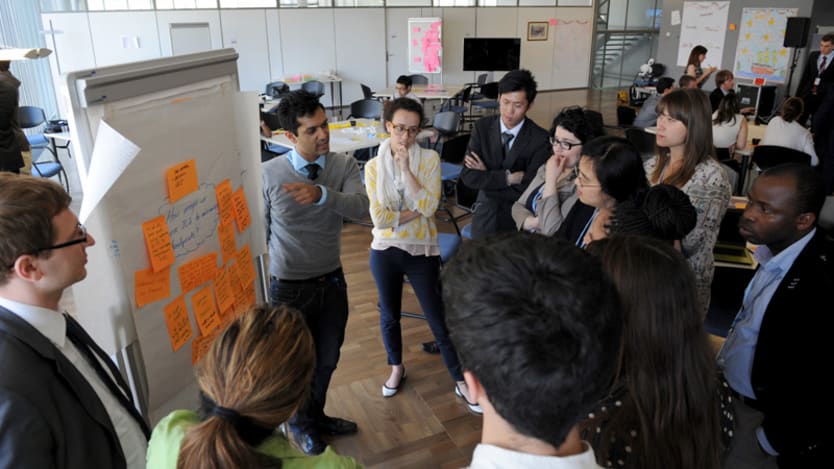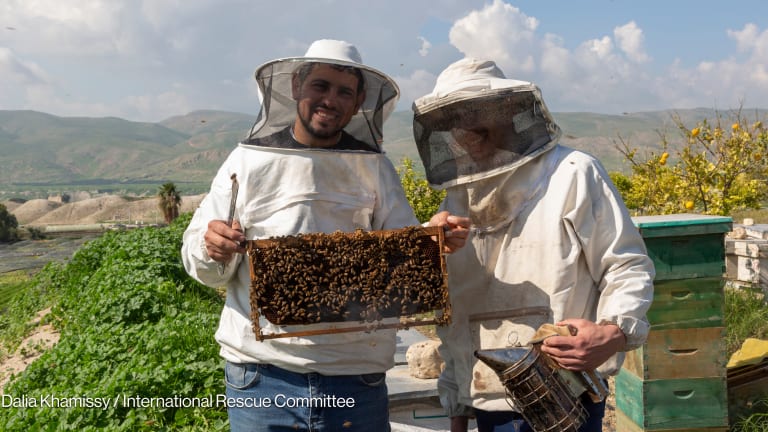
Today, Aug. 12, marks International Youth Day. While this is an annual celebration, this year things are a little different, because it is the year 2015 — a year that has the power to determine the future of humanity and of our planet with the imminent launch of the post-2015 agenda. Babies born today will be teenagers by the time the sustainable development goals expire.
The ambition of the SDGs is certainly inspiring — among other things, they pledge to end poverty in all its forms everywhere. How can we make sure that these far-reaching goals are actually achieved? One way is to ensure the active participation of young people.
Despite the fact that there are 1.8 billion of us young people, we are often poorly represented and marginalized from global decision-making processes. Lack of youth participation mustn’t be mistaken for apathy. As both a young person and ONE activist, I see great enthusiasm among my peers in their work seeking sustainable solutions and creative strategies for development, but frustration at the lack of youth consultation in decision-making. Young people often feel relegated to the periphery of decision-making rather than central to the process.
See more stories on youth and development:
► 3 instances when millennials fail to impress global development recruiters
► Learning from social enterprises: How to solve youth unemployment in Africa
► Education matters, but skills matter more
► Not just for play: Video games seek to motivate youth on climate change
But when it comes to development, young people are strong catalysts for change. Eighty-eight percent of young Europeans think it important to help people in developing countries; we are more likely than older generations to think the EU should increase development aid beyond promised levels, and are more optimistic about the impact individual actions can have overseas.
Despite this enthusiasm for development, in my experience there is still a great lack of knowledge among young people about how to convert energy into action. Young people tend to be disenchanted with traditional politics because of ineffective governance and corruption, leading them to dismiss traditional routes of influence. However, my experiences as a ONE Youth Ambassador have shown me that many politicians do take the voices of young people seriously — after all, we are the voters of the future. Still, decision-makers will continue to listen to the loudest voices, which is why we must explore all routes to encourage young people to speak up and take action.
How then can we maximize youth participation in the post-2015 agenda?
1. Engage youth.
Information should be pitched at a frequency that speaks to youth, and this includes making language more accessible. If it is too wordy, jargon-heavy or dense, young people will be discouraged. Capitalizing on digital reach is also a great way to reach out to this tech-savvy generation and to mobilize them via the channels that they are familiar and comfortable with. Young people are almost twice as likely as older generations to turn to the Internet, particularly social networks, for information about development issues.
We don’t need to look far to find inspiring stories of digital activism. Sana Afouaiz, a young blogger and women’s rights advocate, describes her blog as “giving young people the tools to make their voices heard.” After campaigning online for two years, demanding the abolition of the controversial Article 475 of Moroccan law — which allowed rapists of underage girls to avoid prosecution by marrying their victims — the article was dropped. Sana’s work advocating for women’s rights demonstrates that young people most definitely have the capacity to drive powerful action.
Young people’s affinity with digital technology paves the way for them to be key actors in holding leaders accountable on their promises. By digitally tracking data, young people can follow their governments’ spending and track progress on development targets, such as the SDGs. Indeed, this is a really urgent issue — we are about to launch the SDGs, but what use are they if we can’t measure progress because of a lack of data? Right now, the world’s governments do not have more than 70 percent of the data they need to track progress, but tapping into technology and launching a data revolution could change all this. Fortunately, the desire for collaboration to move this idea forward was one of the successful outcomes of last month’s Financing for Development conference in Addis Ababa, Ethiopia.
2. Empower youth.
The next step is to support young people’s inclusion in decision-making by empowering them to draw on their creativity and potential. To benefit from quality youth input, we must work with young people as beneficiaries, partners and leaders, and see them as initiators of development themselves. This might require capacity building and professional training, but young people should not be excluded when things get technical. Of course, a surefire way to discourage youth participation and diminish trust in leaders is to resort to tokenism. Youth contributions must be taken seriously and institutions need to create spaces for youth to assume participative and influential roles.
Through successful engagement and empowerment, young people will have the capacity and the confidence to contribute to decisions that will shape the world that they will inherit. Talk with us, listen to us, give us space to contribute. Given that the future world will soon be our present, it seems only fair that we have an active role in determining the planet we will soon be responsible for.
Want to see more coverage of the SDGs? Check out Sustaining Development in partnership with Chevron, FXB, Global Health Fellows Program II, Philips, Pfizer, UNIDO, U.N. Volunteers and the U.S. Council for International Business. You’ll find more Devex news coverage of the SDGs like this article, plus opinion pieces, video interviews, and content provided by our partners.








